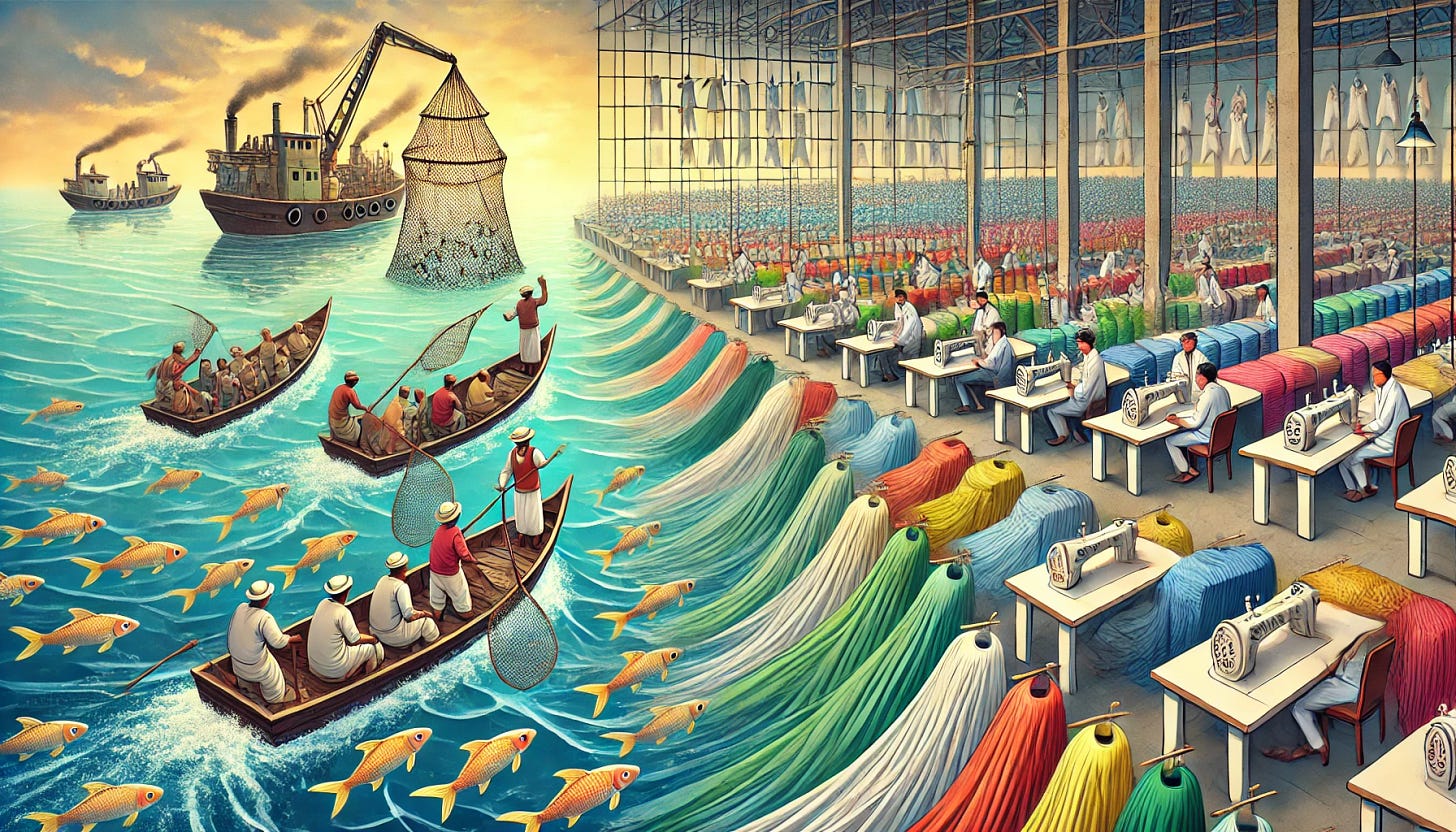Bangladesh’s development success story
How has the country come so far, and where is it heading?
Since its independence in 1971, Bangladesh has made major strides in poverty reduction and development. This is made evident by improved life expectancy and school enrollment, and lowered population growth. Some experts attribute these improvements to low-cost solutions and social mobilization. However, others believe that major economic reforms are necessary to sustaining the type of growth that will allow the nation to graduate from the UN’s Least Developed Countries list by 2026.
Over the last few months, pro-democracy protests in Bangladesh have captured headlines worldwide. What started as a student-led movement to reform the quota system for government jobs, escalated to one against authoritarianism. Since then, Nobel laureate Muhammad Yunus has been selected as chief adviser of the interim government. It is only fitting, as Yunus has spent the last 40 years reducing poverty in country from the bottom-up, via female-led microfinance. In this way, he has been instrumental to supporting Bangladesh’s development from the start. But, microfinance is just one of many economic initiatives that have shaped Bangladesh’s development success story.
The microfinance miracle?
In 1983, Yunus founded Bangladesh’s first microfinance institution, Grameen Bank. Today, Grameen Bank is active in over 90 percent of villages in Bangladesh, providing microloans to over 10 million individuals. Both Grameen Bank and Yunus have been widely lauded for their innovative anti-poverty efforts, eventually earning them a joint Nobel Peace Prize. This is demonstrated by a 2014 study that found that a 10 percent increase in a woman’s borrowing reduced extreme poverty by 5 percent. Moreover, a recent study explains that microloans can help Bangladeshi farmers adapt to negative climate shocks. By receiving this line of credit, farmers were able to increase the amount of land dedicated to agriculture, improving crop production by almost 20 percent.
The Blue Economy
In the 1980s, the World Bank and Asian Development Bank financed projects to develop aquaculture in Bangladesh. Since then, the country’s fish production has increased by more than six fold. Not only does aquaculture make up Bangladesh’s second largest export product, but it also provides more than 50 percent of animal protein intake domestically. This is highlighted by a recent multi-year study that found that Bangladeshi mothers’ preference for fish as a source of protein was associated with a lower risk of child mortality.
Like the rest of Bangladesh’s agricultural sector, fisheries are increasingly at risk due to climate change. However, a new study suggests that climate information services can help mitigate the losses in this sector.
Definition Climate information services (CIS) refer to the dissemination of climate data to help people and organizations make decisions.
To learn more about climate policy in developing countries, consider reading: Climate policy: The urban-rural tradeoff
The sector synonymous with “fast fashion”
Through generating over 80 percent of its export revenue, Bangladesh’s readymade garment (RMG) sector has transformed the nation’s socioeconomic landscape. This is illustrated by a 2014 study that determined that exposure to the garment sector significantly reduced early child-bearing and marriage, while also increasing female educational attainment in rural areas. Specifically, girls in garment-proximate villages have experienced a 50 percent increase in educational attainment relative to girls that do not live near a garment factory.
These advances, however, have come at the cost of human rights. Following international scrutiny over the collapse of an eight-storey garment factory in 2013, Bangladesh was forced to reform its RMG sector. This included a minimum wage increase and high profile safety audits. Though these reforms were found to improve working conditions at the time, a decade on, Bangladesh still has a long way to go.
Bangladesh’s RMG exports are expected to drop by at least 10 percent this year, as recent instability has led to factories operating with lowered capacity. Still, the country’s garment sector remains highly competitive in the long-run.
Closing thoughts
In the span of 53 years, Bangladesh has gone from being among the world’s poorest nations, to an economic development miracle. This is a remarkable achievement, especially considering the country’s high climate vulnerability. In many ways, Bangladesh’s first act has been a development success story, and I look forward to seeing what this young nation achieves following its “second liberation.” 🇧🇩
Thank you so much for being here! The amount of support this newsletter has received in the past few weeks has been overwhelming in the best way.
This post was inspired by a question I received about a country that tackles poverty well. Are there other countries you believe do this too? Let me know in the comments!





"In the span of 53 years, Bangladesh has gone from being among the world’s poorest nations, to an economic development miracle."
Interesting article! I would avoid describing such stories as a "miracle". It'd be silly to complain about people working themselves out of poverty, but miracles make it seem like there's no externalities here.
Should we celebrate or worry about people improving their lives thanks to "fast fasion", an industry that is resposible for environment degradation at a monumental scale, and the conentration of the clothing industry in the hands of a few?
Excellent essay Emaan! 👏 Success stories are inspiring and instructive. Bangladesh is a perfect case study. I have friends at the US Agency for Int’l Development (USAID) and at various non-profits focused on child and maternal health programs. Wonderful generous work over the past 50 years with hard data accountability metrics too. Muhammad Yunus is a superstar. So happy to see him go from nearly imprisoned by corrupt politicians to interim President!